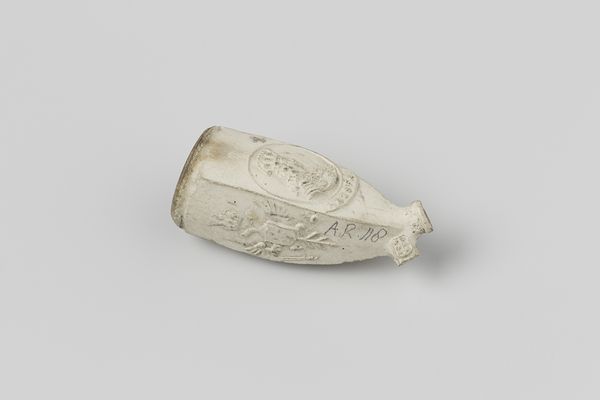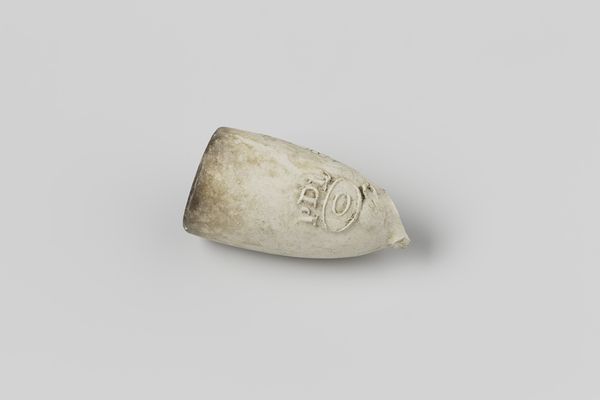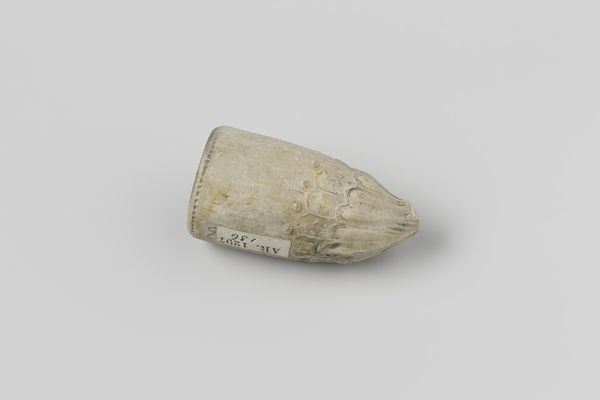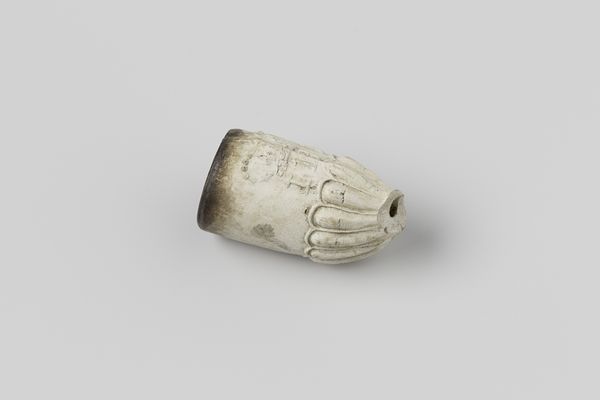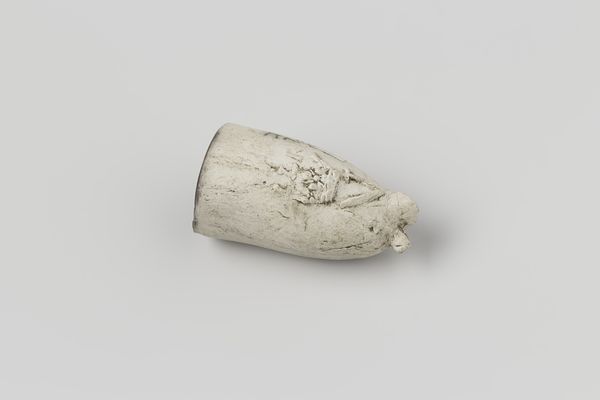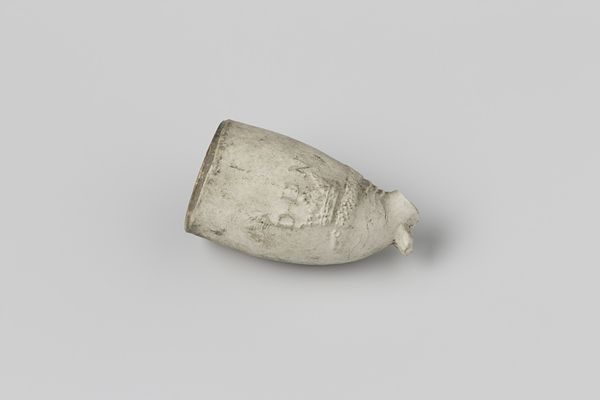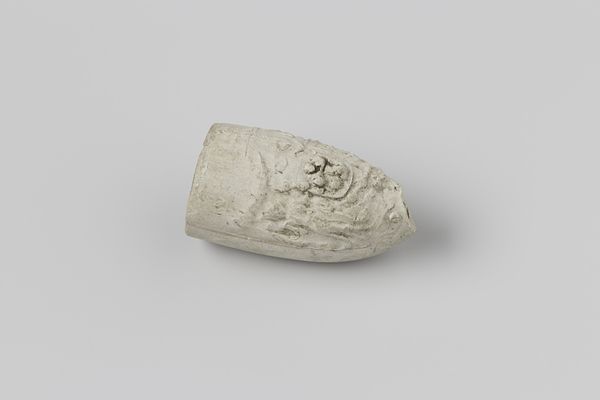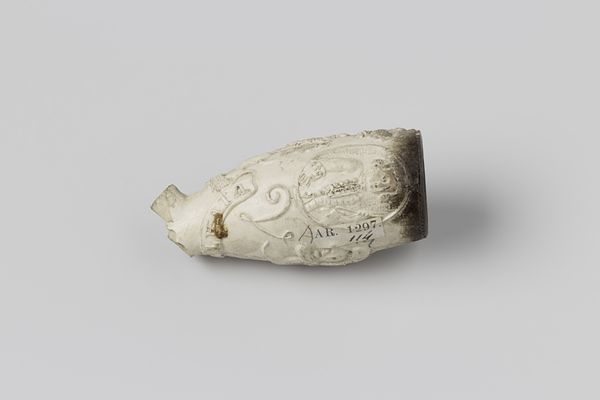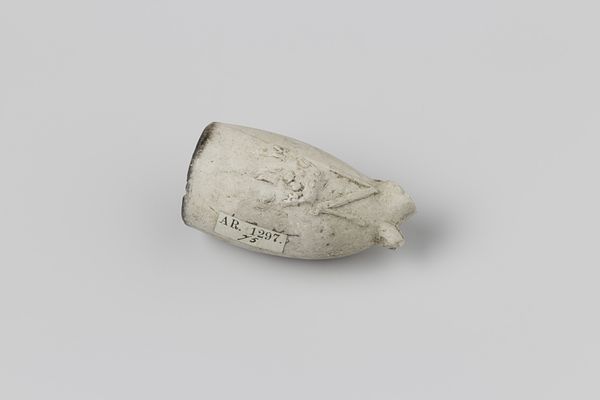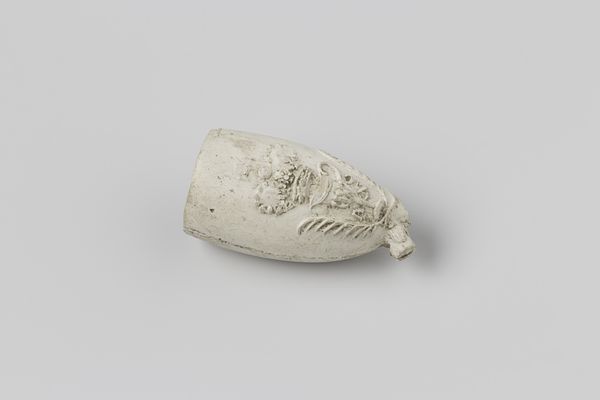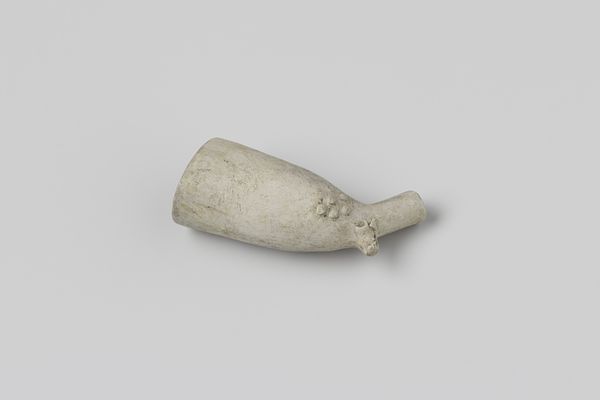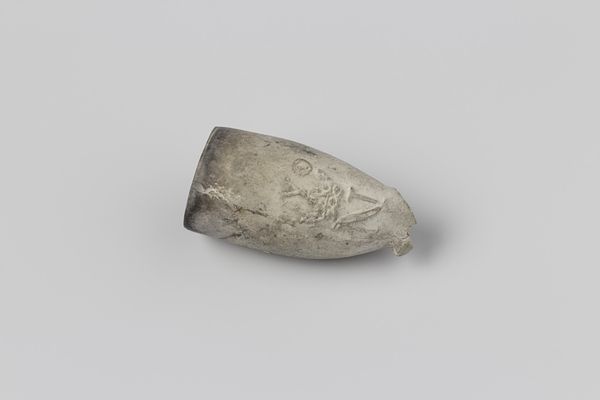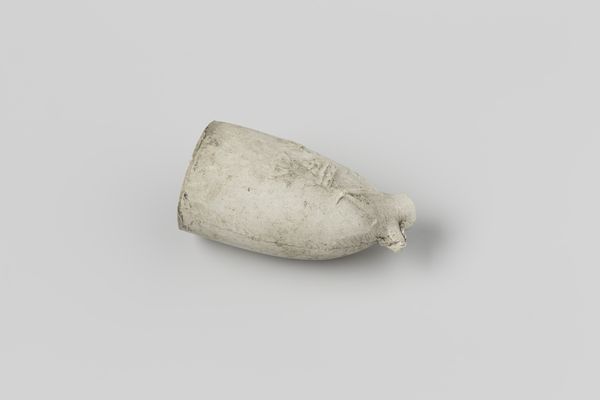
ceramic, sculpture
#
dutch-golden-age
#
ceramic
#
sculpture
Dimensions: length 4.1 cm, width 2.1 cm
Copyright: Rijks Museum: Open Domain
Curator: Looking at this image, what immediately strikes you? Editor: This solitary pipe head whispers stories, don't you think? Its dull monochrome suggests a quiet dignity and the patina speaks of age, but what particularly tickles my fancy is its rather grumpy looking lion adornment; that expression hints at so much more than just tobacco smoke! Curator: Indeed. Let’s delve deeper into "Pijpenkop," a ceramic sculpture dating back to between 1750 and 1780, crafted by Johannes de Lang. Its materiality bears testament to its historical narrative. Editor: A stately sculpture in such unassuming form! Did Johannes perhaps fancy himself a secret satirist? That cheeky lion feels so contrary to the period's portraiture. Curator: The work’s strength is found within its complex iconographic program, blending traditional craftsmanship with societal commentary. Note the structured juxtaposition of classical forms and stylized elements; semiotically, the fragmented state emphasizes themes of loss and survival. Editor: Ah, but survival is such a wonderful thought, isn’t it? A humble vessel becoming a small treasure that whispers of bygone times and everyday habits – think of all the stories it might tell, or even embellish after all this time! Curator: From a technical viewpoint, the craftsmanship exhibits the distinctive characteristics representative of the Dutch Golden Age’s dedication to accuracy and surface quality. Editor: And from an emotional standpoint, it conjures all sorts of sensations. The urge to cradle it in one's palm, sense the coolness of the ceramic and perhaps muse over forgotten social conventions. Curator: This object transcends its primary function, providing insight into cultural norms while exhibiting the remarkable capacity of art to encapsulate collective memory. Editor: So, as we prepare to step away from our elderly little lion here, remember the ability of commonplace treasures to inspire ideas that connect past with future - or even prompt the faintest whiff of old tobacco smoke. Curator: I will remember, instead, how it provides tangible evidence for material and cultural historical study.
Comments
No comments
Be the first to comment and join the conversation on the ultimate creative platform.
